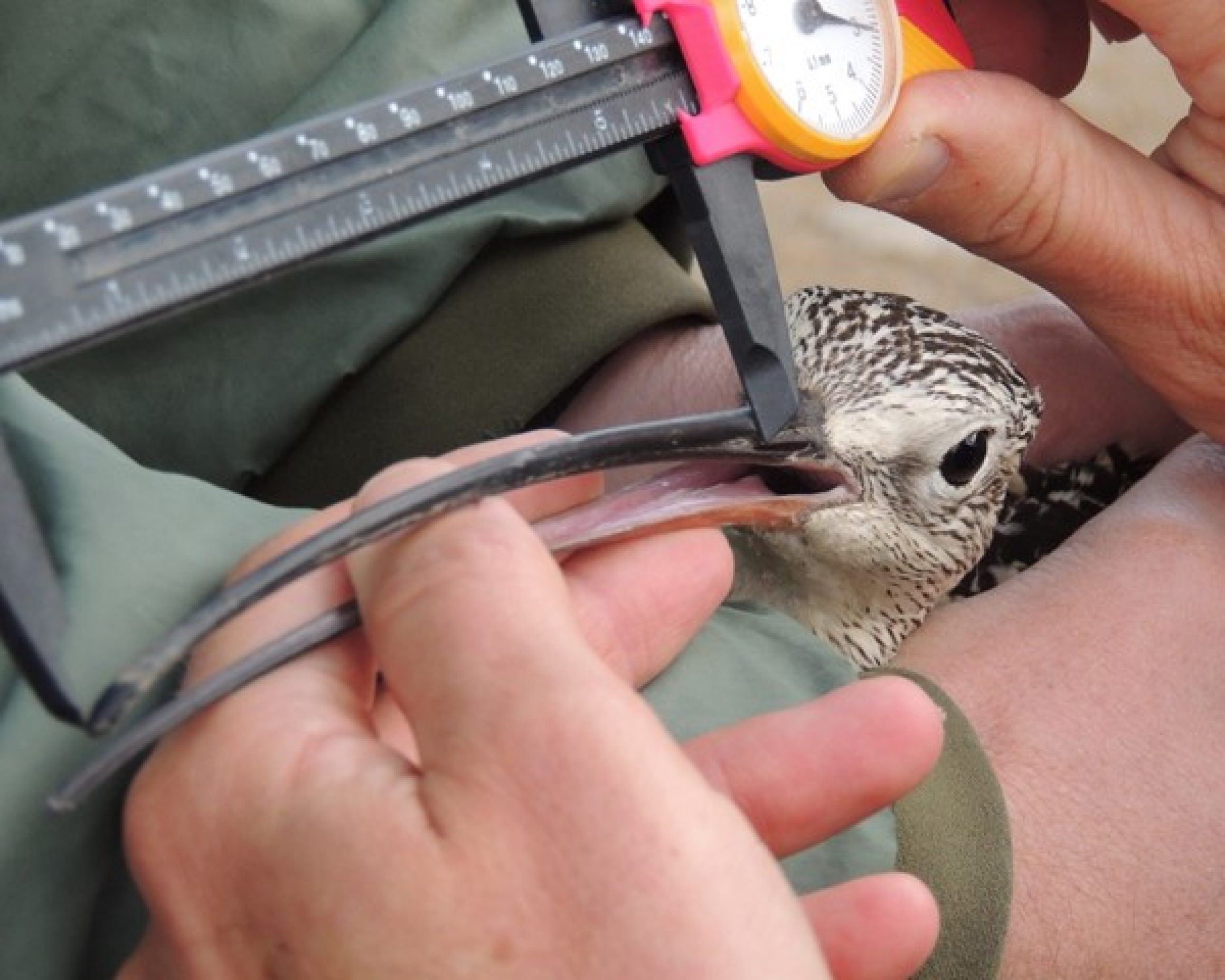There are a number of reasons you might see a group of people out in the sagebrush straining to see through spotting scopes and binoculars, and then engaging in excited handheld radio conversations. In spring 2015, one such group gathered on public land in the Bureau of Land Management’s Cody Field Office area. They weren’t hunters after Wyoming’s big game species, nor paparazzi stopping to search for celebrities on their way back to Hollywood. They were part of a long-billed curlew satellite tracking project.
The long-billed curlew is a shorebird that mates and nests in the intermountain west and spends winters in California and Mexico.
In order to better understand and conserve this species, a team of researchers from the Boise State University Intermountain Bird Observatory outfitted long-billed curlews with satellite transmitters to establish migration routes and timing, wintering habitat and stop over locations along their routes between nesting and wintering habitat.
Though this all sounds fairly simple, capturing and fitting the curlews with the satellite trackers was anything but. For three long months, researchers were up before sunrise and out until sunset, and may still have rings around their eyes from all the hours they spent looking through spotting scopes. They spent April, May and June on Polecat Bench and at the base of Heart Mountain, in the northern reaches of Wyoming’s Bighorn Basin, gathering habitat data and trying to locate nests.
It takes a lot more than just luck to find a long-billed curlew nest. The male and female take turns sitting on the nest—the male is on duty all night and the female, all day. The key to finding the nest is to catch the curlews’ very sneaky switch at dawn and dusk. This involves carefully tracking each curlew in the area, watching to see where it lands, trying to see if its mate gets up and leaves from somewhere in the vicinity, and then watching the bird until it disappears into the sagebrush and grass as it takes a seat on the nest. Equally challenging is remembering exactly where that spot is in the sagebrush sea when looking away from the scope.
After successfully dropping a net over a nesting adult long-billed, researchers quickly removed the bird from the net and hurried back to their equipment to band the bird and collect biological data. Adult birds were netted before any of the chicks hatched and were swiftly released, after all data was gathered, so the nest wasn’t left unattended for long.
DNA samples were gathered from curlew saliva. The DNA helps researchers better understand the relationship between several geographically separate long-billed curlew populations. A metal bird band and an easy-to-spot green identification tag were secured to the curlews’ legs. Some of the netted birds were fitted with a backpack satellite transmitter, which tracked their movements along migration routes and winter residency locations.
The Boise State University Intermountain Bird Observatory’s Curlew Satellite Tracker Project has many partners including the BLM, U.S. Fish and Wildlife Service, The Nature Conservancy, Wyoming Game and Fish Department, the National Elk Refuge and the California Department of Fish and Wildlife.
In 2017, Dr. Jay Carlisle, research director of the Intermountain Bird Observatory, and his team continued annual progress on the project by deploying 25 transmitters on curlews in nine different research areas throughout Wyoming, Montana and Idaho. The current location of the tracked birds can be viewed on the observatory’s tracking website: https://schall11.github.io/curlew_vision/#.
By Lisa Marks (lmarks@blm.gov) & Emmet Pruss (epruss@blm.gov)
Reprinted with permission from the “BLM Daily.” https://blmspace.blm.doi.net/portal/blmdaily/Lists/Posts/Post.aspx?ID=2100

